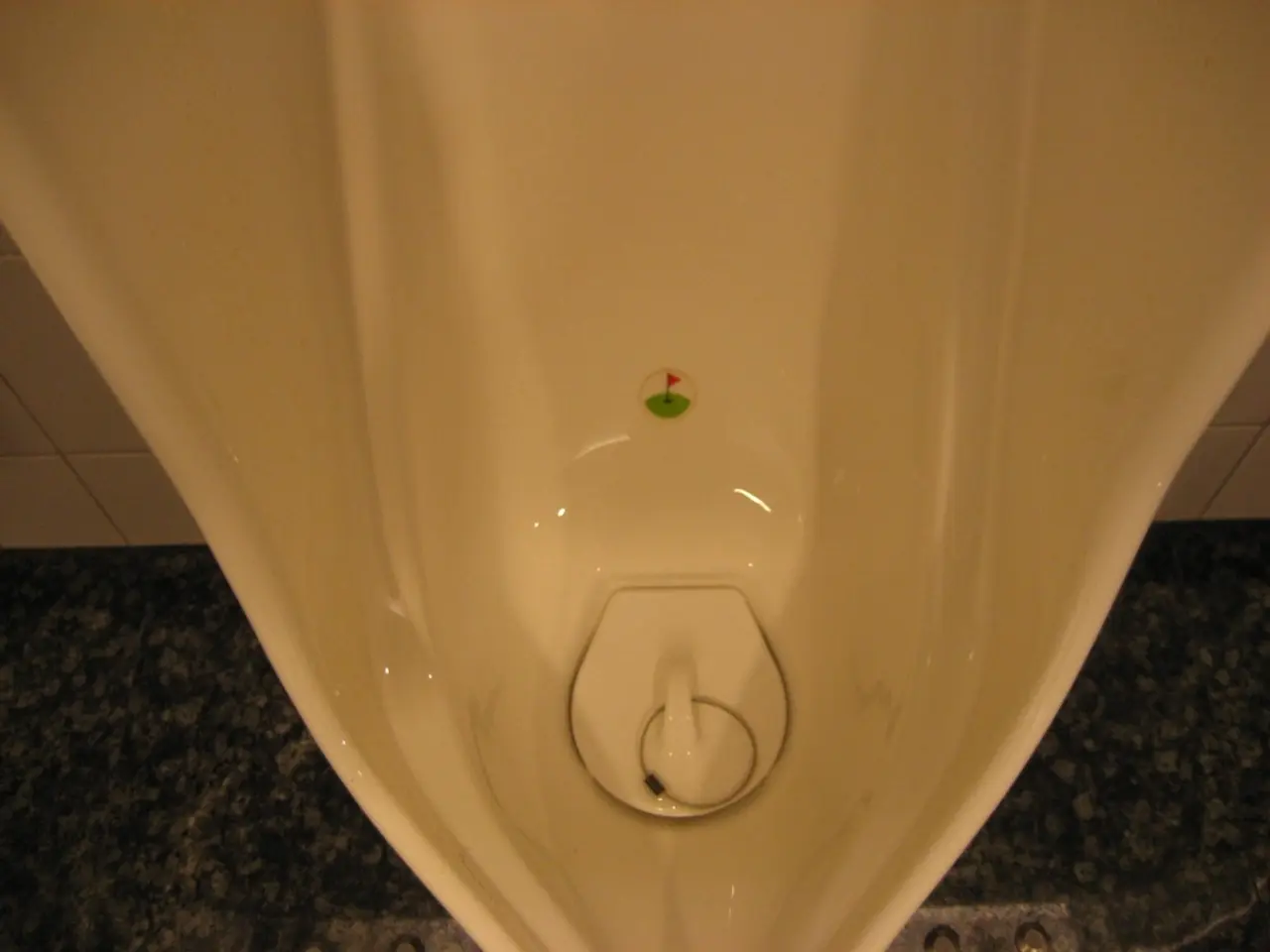Uncontrollable Urine Leakage: Identifying Signs, Root Causes, and Remedies
Overflow incontinence is a type of urinary incontinence that occurs when a person is unable to empty their bladder completely, resulting in an overflow that can lead to leakage. This condition is characterized by sudden and involuntary leaking of urine, dribbling, frequent, small urinations, a weak urine stream, a feeling of fullness even after urinating, difficulty initiating urination, not sensing the bladder is full, and recurrent urinary tract infections (UTIs).
To diagnose overflow incontinence, a doctor may review a person's medical history, ask them to fill out a questionnaire or answer a series of questions, and ask them to keep a voiding diary. They may also perform physical examinations, focusing on the abdomen to feel for an enlarged bladder, and conduct rectal or pelvic exams. Nerve and reflex assessments, imaging tests, and urodynamic tests may also be used to understand the underlying cause of the incontinence.
Common treatment options for overflow incontinence focus on addressing the underlying cause of bladder outlet obstruction or impaired bladder emptying. These treatments include lifestyle modifications, medications, intermittent catheterization, and surgical procedures.
- Medications: Alpha-adrenergic blockers, such as doxazosin, tamsulosin, and alfuzosin, are often prescribed to relax the muscle at the base of the urethra, allowing urine to drain more easily.
- Intermittent Catheterization: For patients with neurogenic bladder or impaired bladder emptying, clean intermittent catheterization helps prevent urinary retention and the resulting overflow.
- Surgical Interventions: Procedures such as transurethral resection of the prostate (TURP) may be indicated to relieve obstruction in cases of benign prostatic hyperplasia. Surgery may also be considered for pelvic organ prolapse or urethral strictures causing overflow incontinence.
- Lifestyle and Physiotherapy: While more commonly used for other types of incontinence, pelvic floor muscle training may support bladder function in women, alongside lifestyle changes such as weight control, avoiding bladder irritants, and scheduled voiding.
- Medical Devices: Vaginal pessaries or urethral inserts can help support pelvic organs and reduce leakage, particularly in women with pelvic organ prolapse contributing to overflow symptoms.
Nerve stimulation, involving sending electrical impulses to nerves of the bladder muscles, can help strengthen them and improve bladder function. Treatment for overflow incontinence may also involve behaviour training, the use of adult diapers or undergarments designed to absorb leaks, and urinalysis to check for UTIs, blood, protein, or sugar in the urine.
It's important to note that untreated overflow incontinence risks urinary tract infections and kidney damage. Incontinence is both preventable and treatable, and people who find it disrupts their daily activities or prevents them from doing things they enjoy should consider talking with their doctors.
The prevalence of urinary incontinence is roughly 25-45%, with overflow incontinence accounting for a significant portion of chronic incontinence cases. If you or someone you know is experiencing symptoms of overflow incontinence, it's crucial to seek medical advice to receive a proper diagnosis and treatment plan.
- Science has made significant strides in understanding the causes of urinary health issues, including medical-conditions like overflow incontinence, and has developed multiple treatment options such as medications and surgical interventions.
- With the growing concern for health-and-wellness, it's essential to address mental-health alongside physical health, considering that conditions like overflow incontinence can impact an individual's mental state and quality of life.
- In recent years, the wellness industry has explored alternative treatments for various health concerns, with CBD gaining popularity for its potential benefits on managing pain and anxiety associated with certain medical-conditions, like urinary incontinence.




